Boston Quattro 1132-T review
Boston’s multi-node platform packs your rack with server goodness
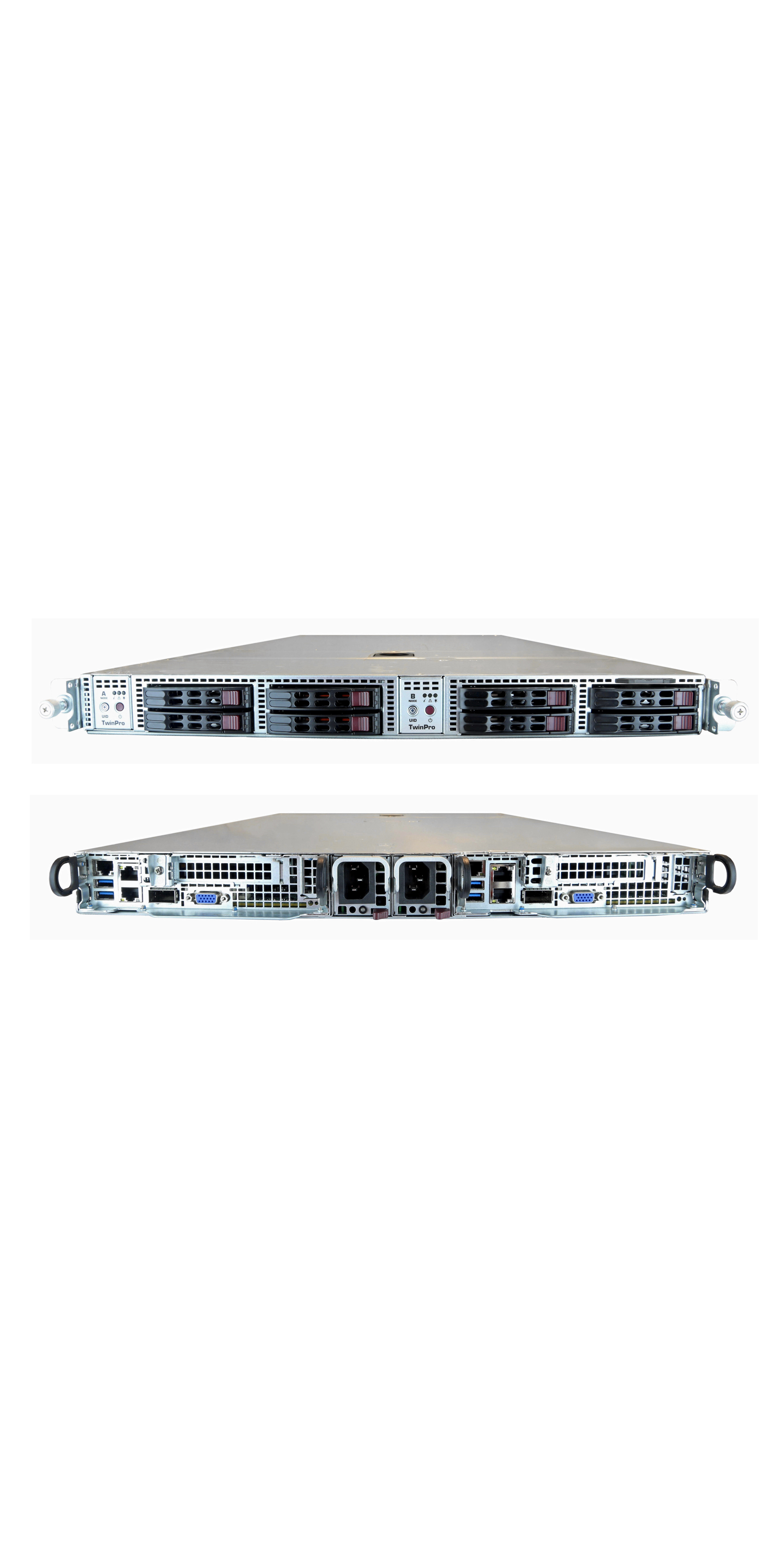

A good choice for high-density compute node clusters, Boston’s Quattro 1132-T delivers a fine hardware specification for the price
-
+
High server density; Embedded SAS-3 storage; Dual 10GbE ports per node; Full remote management; Good value
-
-
Cooling could be better designed as noise levels are high

Multi-node servers are proving a more popular choice than blade servers for rack dense environments. They're cheaper to buy and run, offer equally good processing densities, are easier to scale up with demand and a lot more amenable when it comes to hardware upgrades.
Boston's latest Quattro 1132-T shows these attributes off admirably. This compact 1U rack server houses a powerful pair of nodes each equipped with dual E5-2600 v3 Xeons, a heap of DDR4 memory, plenty of storage permutations and all for less than eight grand.
The system is an all-Supermicro affair comprising its latest SuperServer 1028TP multi-node rack platform. We have the DC1TR model on review which delivers fast SAS-3 RAID protected storage and dual 10GBase-T ports per node.
Other options include motherboards with embedded 56Gbps QSFP Infiniband ports for low-latency server clustering. Lower cost versions are also available that support SATA storage only and have just a pair of 1GbE network ports.
Node and chassis design
The nodes in the review system were fitted with Supermicro's proprietary X10DRT-PT motherboards. Both nodes came with dual 2.6GHz E5-2640 v3 Xeons topped off with chunky passive heatsinks and flanked down the sides by four groups of four DIMM slots.
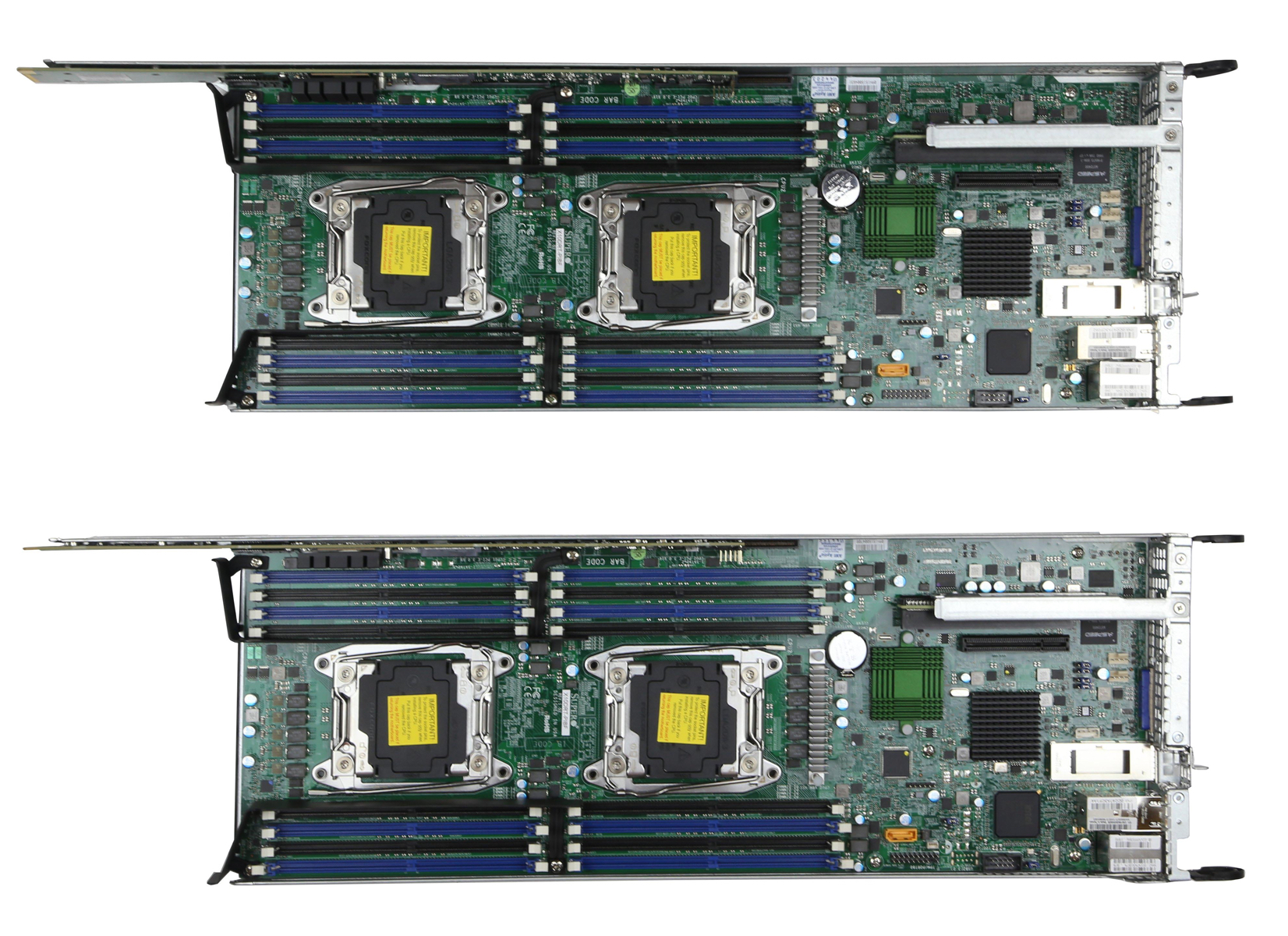
The node motherboards may be small but they deliver an impressive hardware specification
Each node gets 64GB of DDR4 memory included which can be pushed to 512GB using RDIMMs or 1TB with more costly LR-DIMMs. There's room to expand as the nodes have a small riser card with a 16X PCI-Express Gen3 slot that accepts a half-height, half-width card.
Storage features look good as the boards have an embedded Avago 3108 12Gbps SAS-3 controller supporting stripes, mirrors, RAID5 and 6 arrays. The chassis has two groups of four SFF hot-plug bays at the front and Boston included a couple of 2TB Seagate SATA SFF drives for each node.
Power and SAS-3 interfaces for each node are routed through to an extension bar on the side of their case. As you slide the node into place, this mates with the chassis mid-plane allowing the node to access the dual redundant 1kW PSUs and the group of four hard disk bays directly in front.
Remote management
Each node has an embedded remote management module (RMM) and dedicated Fast Ethernet port. Its web interface isn't as informative as those provided by the likes of Dell and HP, but it does give you plenty of data on critical components and power graphs showing daily, weekly and monthly consumption.
Sensor thresholds can be linked to email alerts and node power can also be controlled from the console. Value looks good as the RMMs have full remote control and virtual media services enabled as standard Dell and HP expect you to buy a license upgrade for these.
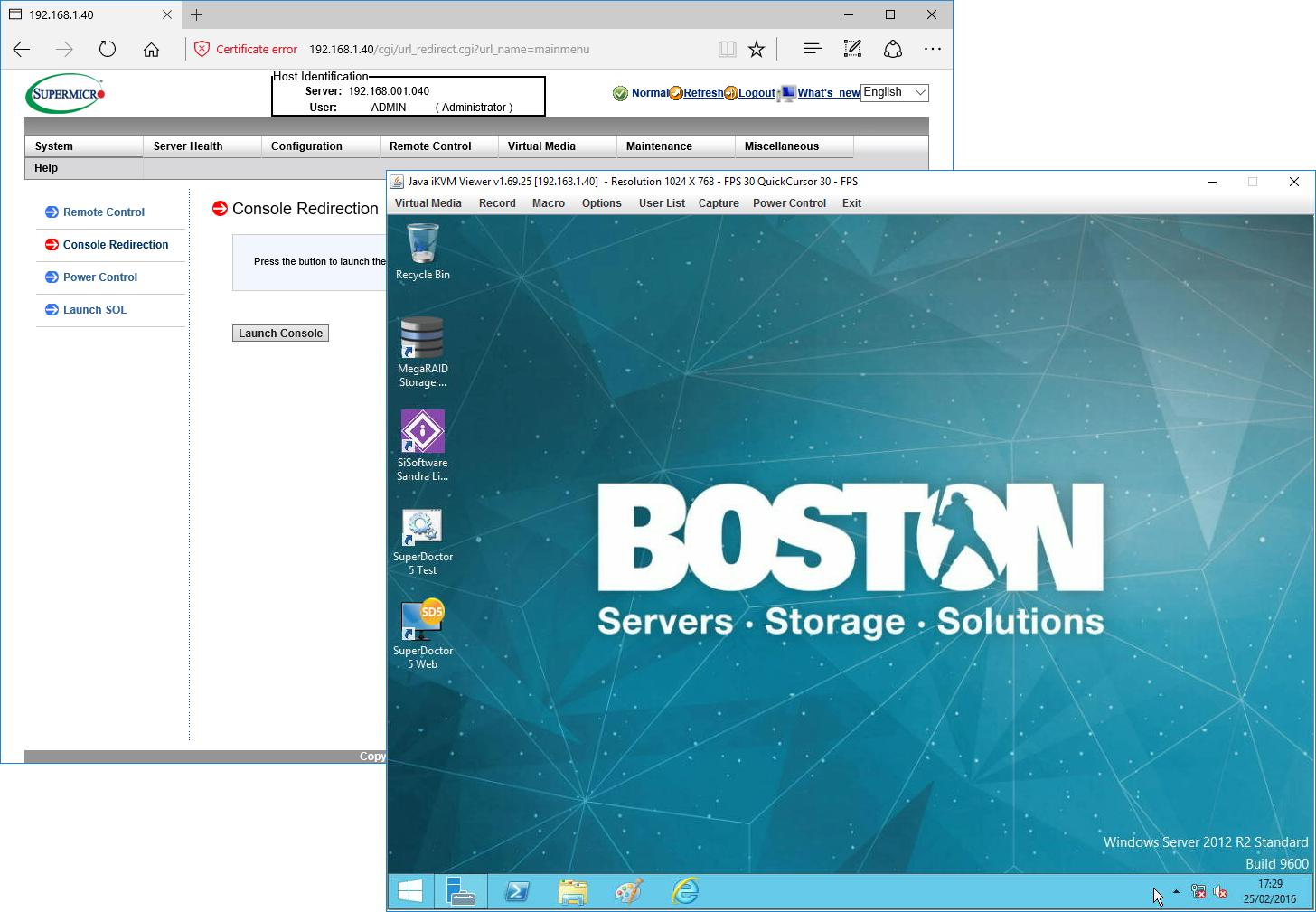
Supermicro provides full OS remote control as a standard feature and not as an expensive option
The Multi Node feature proved useful to us as one RMM console showed status views of both nodes with links to swap between them. Supermicro has recently added another tab for storage where we could see installed hard disks, their capacities and temperatures.
You also get the free SuperDoctor 5 SNMP management utility which presents a cheerful interface packed with colour-coded graphs and speedometer-style dials for fans, temperatures and voltages. This has more alerting features so you can send out SMS texts and emails when components go out of kilter.
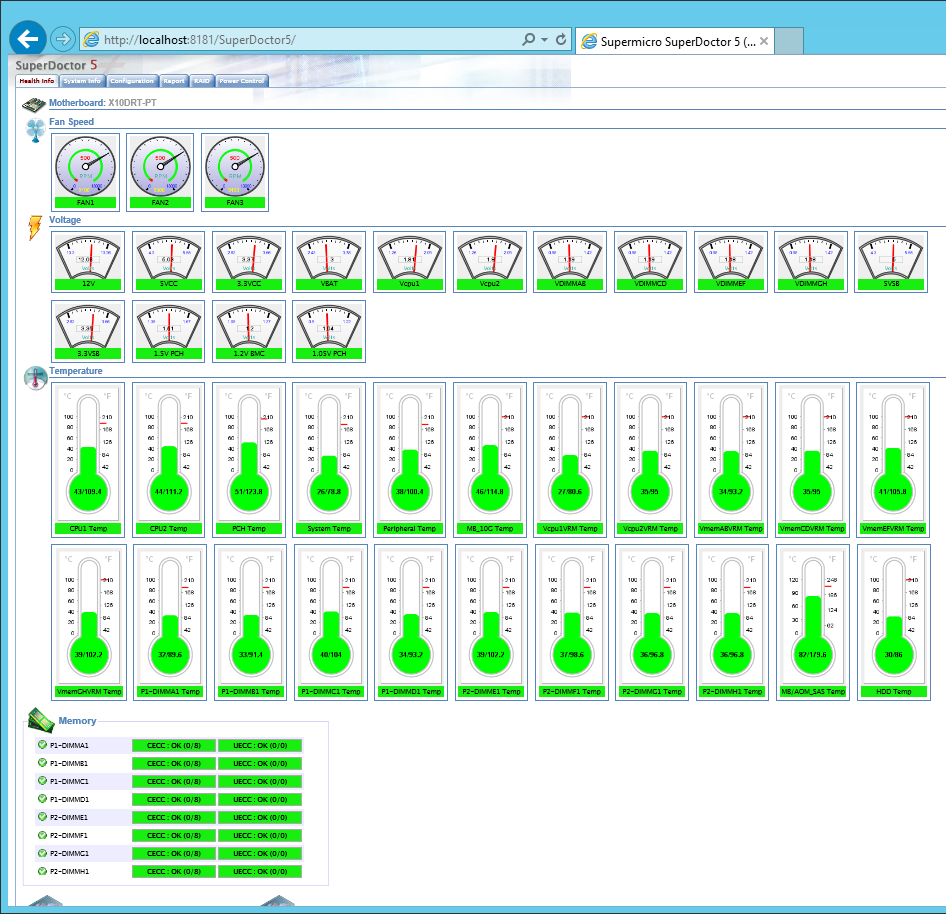
The SuperDoctor 5 SNMP utility provides a colourful dashboard showing node vital signs
Noise and power
The chassis handles all cooling and has two banks of three dual-rotor fans (one bank per node) located under a removable hatch in front of each node. The system is designed to provide separate thermal zones for each node so problems with one won't affect the other.
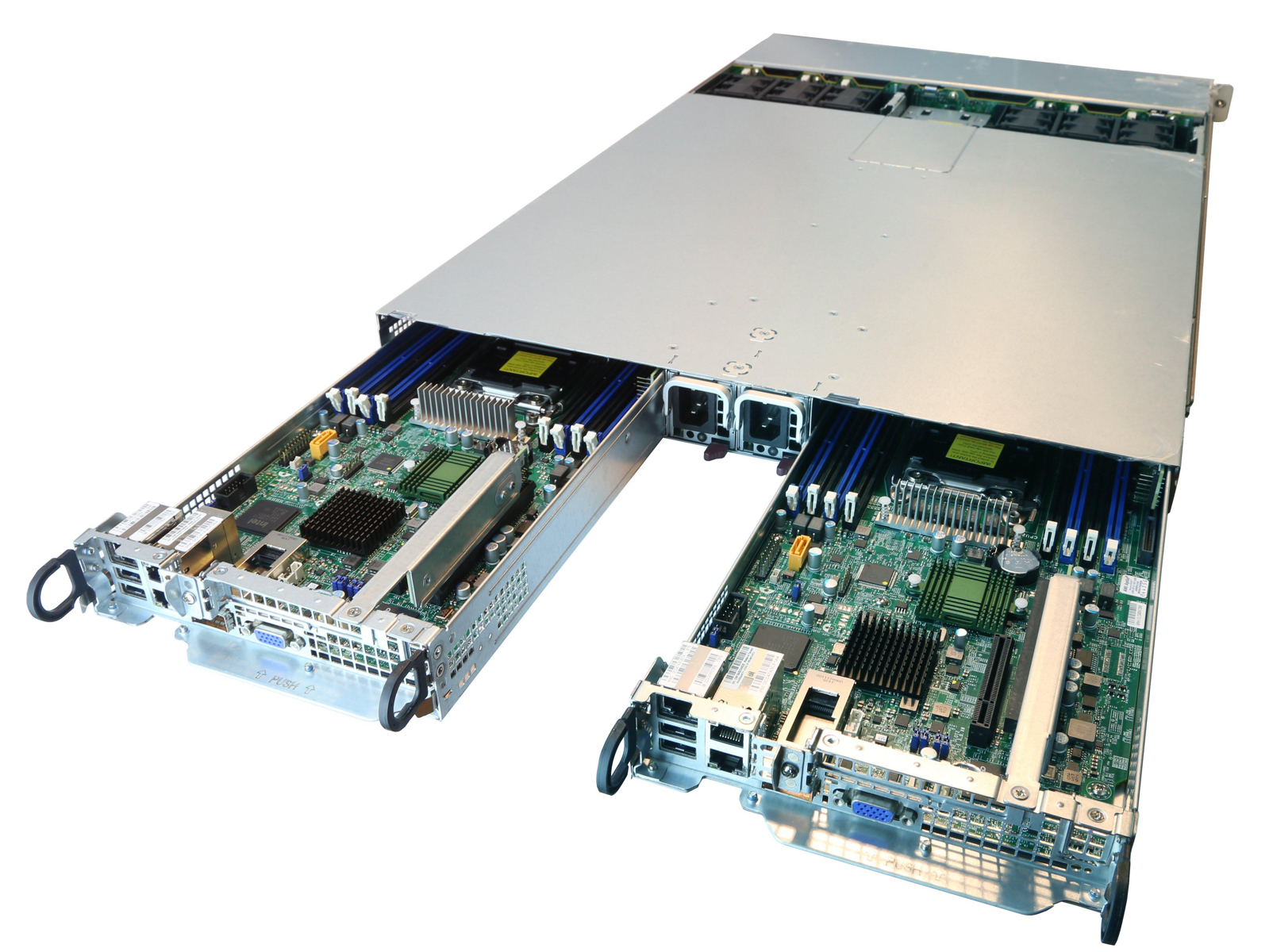
The nodes are serviced by 1kW load balanced PSUs and each have three cooling fans
On powering both nodes up we found the chassis fans were running excessively fast and generating high noise levels of around 75dB. We take a dim view of servers that generate a lot of noise as it indicates internal design could be better plus it's a waste of power.
After some investigation, we found the fans on both nodes were set to the Standard Speed mode. Changing this to the PUE (Power Utilisation Effectiveness) mode reduced their speed to around 8,000 rpm with noise levels dropping to a slightly less annoying 65dB.
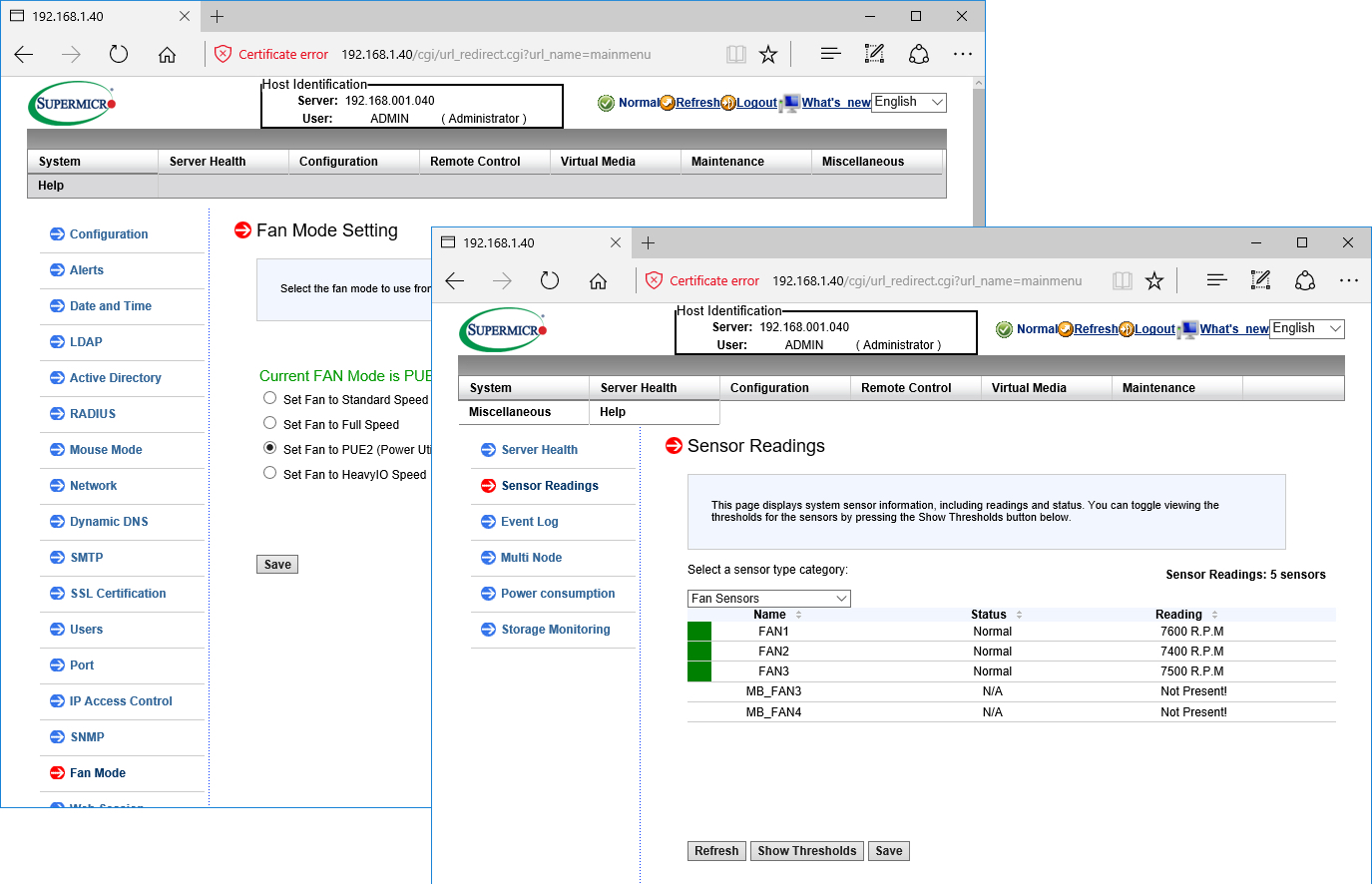
Changing the cooling fan mode in each node's RMM interface reduced noise levels considerably
Usefully, the fan modes are accessed from each motherboard's RMM interface so they can be modified on the fly without affecting live operations. Once the fan speeds had been reduced, the Quattro returned some low power readings.
With both nodes running Windows Server 2012 R2, we measured the complete system pulling 190W in idle and peaking at 482W under extreme load from the SiSoft Sandra benchmarking app. The 8-core Xeons have 90W TDPs so idle and peak draws per node of 85W and 241W are quite good.
Conclusions
Boston's Quattro 1132-T puts plenty of processing power into 1U of rack space and is a good choice for enterprises that need a high density compute node with all-round redundancy. Node cooling design could be improved as this would reduce power consumption even more, but you'd still be hard pushed to find a multi-node server with embedded SAS-3 storage and 10GbE for less than this.
Verdict
A good choice for high-density compute node clusters, Boston’s Quattro 1132-T delivers a fine hardware specification for the price
Chassis: 1U rack
Power: 2 x 1kW hot-swap Titanium PSUs
Node bays: 2 x hot-swap
Storage: 8 x SAS/SATA SFF hot-swap drive bays (4 per node)
Two server nodes each with the following:
Motherboard: Supermicro X10DRT-PT
CPU: 2 x 2.6GHz Xeon E5-2640 v3
Memory: 64GB DDR4 RDIMM (max 1TB with LR-DIMMs)
Storage: 2 x 2TB Seagate Enterprise SFF SATA drives
RAID: Avago 3108 SAS-3
Array support: RAID0, 1, 10, 5, 6
Network: 2 x 10GBase-T
Management: Embedded RMM with 10/100 port
Software: Supermicro SuperDoctor 5
Warranty: 3 years on-site
Get the ITPro daily newsletter
Sign up today and you will receive a free copy of our Future Focus 2025 report - the leading guidance on AI, cybersecurity and other IT challenges as per 700+ senior executives
Dave is an IT consultant and freelance journalist specialising in hands-on reviews of computer networking products covering all market sectors from small businesses to enterprises. Founder of Binary Testing Ltd – the UK’s premier independent network testing laboratory - Dave has over 45 years of experience in the IT industry.
Dave has produced many thousands of in-depth business networking product reviews from his lab which have been reproduced globally. Writing for ITPro and its sister title, PC Pro, he covers all areas of business IT infrastructure, including servers, storage, network security, data protection, cloud, infrastructure and services.
-
 CyberOne appoints Microsoft’s Tracey Pretorius to its advisory board
CyberOne appoints Microsoft’s Tracey Pretorius to its advisory boardNews The threat intelligence leader will provide strategic guidance to CyberOne’s executive team
By Daniel Todd Published
-
 CISA issues warning in wake of Oracle cloud credentials leak
CISA issues warning in wake of Oracle cloud credentials leakNews The security agency has published guidance for enterprises at risk
By Ross Kelly Published
-
 Reports: White House mulling DeepSeek ban amid investigation
Reports: White House mulling DeepSeek ban amid investigationNews Nvidia is caught up in US-China AI battle, but Huang still visits DeepSeek in Beijing
By Nicole Kobie Published